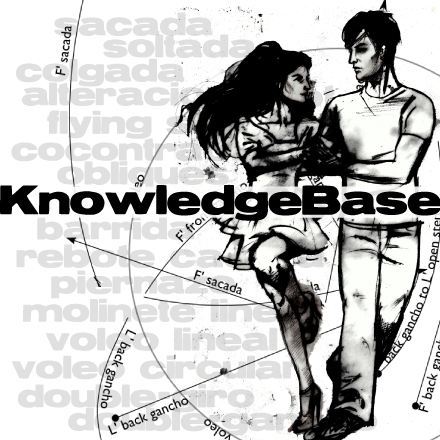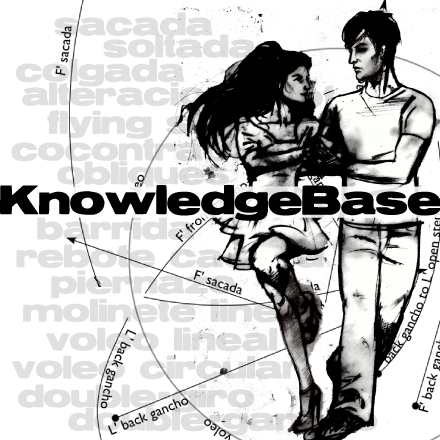Intention is always the very first part of the next movement. To create intention we prepare our bodies for a new direction and communicate about that with the partner, without going there yet! The relation with the partner, through the arch of connection, helps us to sense and make micro adjustments during this moment. If we lose the arch one of us has moved too soon.
- Both dancers need flexion of the base leg’s hip joint for stability, this also activates the base leg’s muscles.
- The mark controls the amount of knee flexion in the base leg, which determines the size of the step!
- Hip and knee flexions, which prepare and control the step, must happen before the step, not during the motion.
- The mark shows intention by using his body to push or pull against the Revel’s points of connection. He does not use his hands! 2mm movement is plenty, because his is just information, not motion!
- Direction: Toward the Mark: Use hip flexion to pull chest backward, with the result of pulling equally on both of the Revel’s points of connection (both hands, or both sides of her body)
- Direction: Away from the Mark: Use hip flexion to push the chest forward, with the result of pushing equally on the Revel’s points of connection
- Direction: Lateral to the Mark’s body: Contract the corresponding oblique muscles, this creates a small rotation of his body with the result of pulling on one of the Revel’s points of connection
- Both dancers align their base legs into external rotation relative to the direction of intention/projection. They use the oblique muscles of the base leg to rotate the leg and body.
- The revel perceives the information he is directing at her through her points of connection, whichever these may be at any given moment. She constantly adjusts her points of connection (hands, chest, arms) so that she can perceive information from both sides of his body, in all directions. She responds to his intention by intensifying her arc in adjustment to the direction of intention (so that her arc doesn’t move!) and beginning to gently project/extend her her free leg in the direction indicated.
- The revel’s free leg extends toward projection, sliding the toes along the floor with the leg and foot in external rotation. During the projection, the knee and ankle are gradually fully extended. The first thing to move, however, is the free leg’s hip.
- In back projection, the free leg’s hip extends.
- In front projection, the free leg’s hip flexes (also flexing the knee for a moment).
- In side projection, the free leg’s hip abducts. Note that the external rotation in side projection is slight.(The knee faces front.)
- Sometimes the Mark is projecting as well, in which case he maintains his arc’s position as he does so.
- When preparing to step front, the Mark must show intention for the Revel’s direction before beginning to move his free leg front.
- When preparing to step back, the Mark must extend his free leg back before starting the step, so as not to break the arch during the transfer.
- When the free leg is passing close to the base leg, the knee and ankle joint relax, and the hip takes a slight internal rotation (this is the “sexy” aesthetic) of tango. As it reaches further toward projection, the free leg has external rotation and the knee and ankle extend fully.
- A sublime mark will control length, direction, and dynamic of the revel’s projection precisely at all times. A sublime revel expresses his intention exactly, and does not make arbitrary sizes or dynamics.











